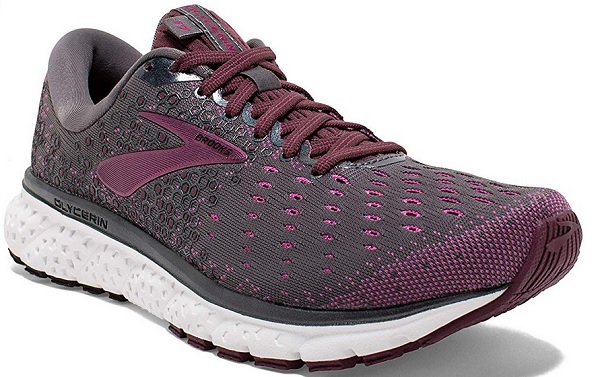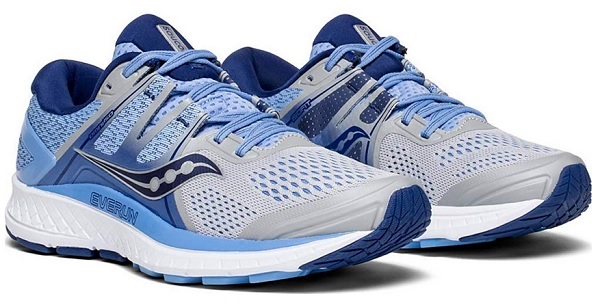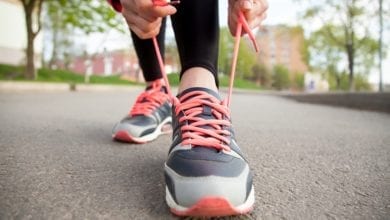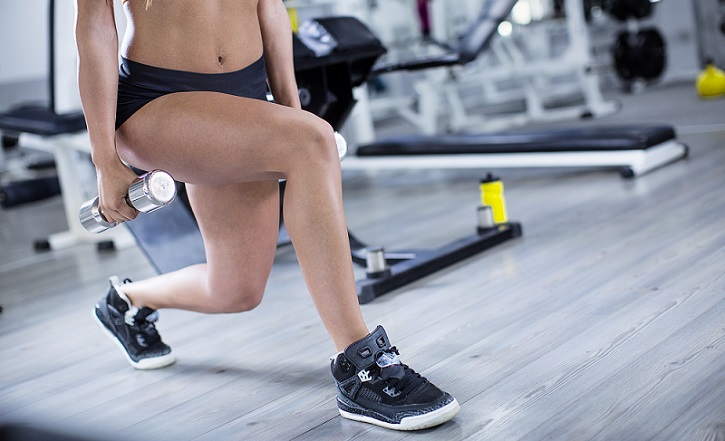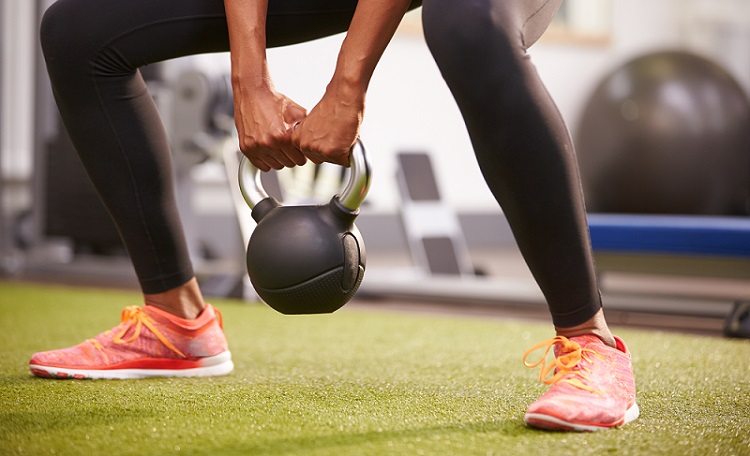
Our Editors independently research, test, and rate what we feel are the best products. We use affiliate links and may receive a small commission on purchases.
Road running is unique in that the focus is on distance rather than on obstacles or rough terrain. At the shortest, a road running event could be a 5k.
At the longest, a marathon measures 26.2 miles. Still, there are even longer events such as a 100-mile endurance road running course.
No matter where you are in your long-distance running game, you won’t get very far without the right shoes.
With the pair of the top women’s road running shoes, you can take minutes off your time and reduce the discomfort you feel both during and after the event.
So which road running shoes are the best for women?
Best Road Running Shoes For Women
| Brooks Glycerin 17 Running Shoes | Saucony OMNI ISO Women’s | ALTRA Torin 4 Running Shoes | |
|---|---|---|---|
| Uppers: | Fabric | Fabric / Mesh | Mesh |
| Pronation: | Neutral | Moderate to Severe | Neutral |
| Midsole Drop: | 10 mm | 8 mm | Zero-Drop |
| Weight (per shoe): | 9.2 ounces | 9.5 ounces | 7.6 ounces |
For more of my running gear recommendations, have a look through these popular Women’s Workout guide links: Running Jackets, Running Leggings, Running Sunglasses.
Quick Answer: The 7 Best Road Running Shoes for 2025
- Brooks Glycerin 17 Running Shoes
- Saucony OMNI ISO Women’s
- ALTRA Torin 4 Women’s Running Shoes
- adidas Ultraboost Road Running Shoes
- ASICS Women’s Gel-Kayano 25 Running Shoes
- Under Armour Speedform Gemini 2
- New Balance 680v6 Cushioning Running Shoe
Challenge yourself to longer distances with a pair of the top rated road running shoes for women. Our reviews, Buyer’s Guide and Comparison Table will get you laced up and out the door in no time at all.
Women’s Road Running Shoes Reviews
#1 Brooks Glycerin 17 Running Shoes
- Pronation: Neutral
- Midsole Drop: 10 mm
- Unique Tech: DNA Loft Transition Zone
- Weight (per shoe): 9.2 ounces
The Brooks Glycerin 17 is the newest in a long line of road running shoes that are designed with both cushion and responsiveness in mind.
While some shoes lack one in favor of the other, the Glycerin 17 is unique in offering runners the best of both.
Much of the shoe’s responsiveness comes from a well-designed upper and interior liner made from durable but stretchy fabric. Your foot is wrapped in flexible, comfortable materials that are designed for support.
Highly durable, this outsole moves with your foot in a natural way that helps prevent injury, but acute and repetitive. With a rubber sole that provides grip and smooth transition from heel to toe, the Glycerin 17 by Brooks is an ideal road running shoe for those focused on long-distance.
While these road running shoes are designed for neutral pronation, many runners report that they are more comfortable for under pronators, or those with higher arches.
This may be due to the comfort-stretch upper and inner lining that doesn’t force the foot flat against the saddle, or the midfoot of the shoe’s support system.
As the next natural evolution in the Glycerin line of road running shoes, Brooks has improved the features that runners love the most and introduced new features designed for added comfort and durability.
#2 Saucony OMNI ISO Women’s
- Pronation: Moderate to Severe Overpronation
- Midsole Drop: 8 mm
- Unique Tech: PWRFOAM Midsole, EVERUN Topsole
- Weight (per shoe): 9.5 ounces
As the successor to the OMNI 16, the ISO is designed for overpronators who need much more stability in a road running shoe.
Whether you have a low arch or very flat feet, the Saucony OMNI ISO is designed to give you the support you need.
One way that Saucony provides the stability in the OMNI ISO is with the PWRFOAM midsole. While the outsole provides the grip and responsiveness, the midsole brings a natural shape and movement to your stride.
PWRFOAM is Saucony’s proprietary midsole technology developed for moderate to severe overpronators.
Saucony has also developed an advanced topsole material and design called EVERUN. EVERUN works in combination with PWRFOAM to provide responsiveness as well as cushion, both vital to the long-distance runner.
FlexFilm with an engineered fabric upper tie all this technology together into a women’s road running shoe that provides the best in stability and cushion for overpronators. Their innovative tech also makes this shoe a great option for track running as well.
Many runners who suffer from plantar fasciitis have found relief with these running shoes as have those who experience heel pain. If other running shoes have been uncomfortable because of your flat feet, the Saucony OMNI ISO might be the answer.
#3 ALTRA Torin 4 Women’s Running Shoes
- Pronation: Neutral
- Midsole Drop: Zero-Drop
- Unique Tech: Quantic Midsole
- Weight (per shoe): 7.6 ounces
ALTRA is a relative newcomer to the world of running shoes but they are already making great strides (no pun intended!)
Golden was intent on designing a flexible running shoe that allows the foot to move naturally while running, all with a zero drop, or offset.
The idea of a zero drop was born early in Golden’s running career, which started when he was just 10 years old. The Torin 4 uses the latest in ALTRA zero-drop technology along with the newly developed Quantic midsole.
The Quantic midsole offers cushion but is much lighter than the midsole of the Torin 4 Plush as it’s 2 mm thinner. Still, the Torin 4 Plush is a great option for those who may not want to sacrifice the cushion for lighter weight and a more responsive run.
All ALTRA running shoes are designed to provide the foot with a more natural movement with each stride. Even the forefoot and toe box is designed to allow the ball of the foot and the toes to spread in a more biologically correct way compared to some other running shoes.
The Torin line has been a favorite of ALTRA fans since the beginning and the Torin 4 is an amped-up, tuned-in, upgraded version. If you haven’t given ALTRA a try yet and you consider yourself a passionate runner, you might want to start with the Torin 4 women’s running shoe.
#4 adidas ultraBOOST Road Running Shoes
- Pronation: Neutral
- Midsole Drop: 10 mm
- Unique Tech: Primeknit Upper
- Weight (per shoe): 10.9 ounces
The adidas ultraBOOST road running shoes are engineered to offer the support, lockdown, ventilation, and more in the exact places you need them most.
By targeting the technology, you get a shoe, and a run, that is tailored to the natural movement of your foot.
The adidas Primeknit upper not only helps to provide support where it’s most needed but also ventilation. On long-distance runs, your worst enemy can be heat and sweat.
This specially designed upper allows for optimal airflow as well as natural movement even when kept stable.
Much of the shoe’s stability comes from the unique lockdown and lacing design in the midfoot. Comfortable for many foot shapes but designed for a neutral pronator, this lockdown system helps to prevent injury and offer maximum comfort.
Also, you’ll find the comfortable inner lining and the slipper-like collar provide a soft, cushioned feel. Both the lining and collar are incorporated into the overall design of the shoe and there are many styles and colors to choose from so showing off your unique personality isn’t a problem.
Only the ultraBOOST Laceless is lighter than the ultraBOOST women’s running shoes but they still come in a little heavy compared to other options.
Still, with the adidas brand to back it up along with years of dedicated runners who stick by the ultraBOOST, there are many reasons why you might want to make this running shoe your next one.
#5 ASICS Women’s Gel-Kayano 25 Running Shoes
- Pronation: Overpronation
- Midsole Drop: 13 mm
- Unique Tech: IGS, Impact Guidance System
- Weight (per shoe): 9.8 ounces
When it comes to ASICS road running shoes, it’s ALL about the technology and how each technology is integrated into the whole shoe.
The ASICS Women’s Gel-Kayano 25 Running Shoes are more than the sum of their individual technology parts, and here’s why.
The Gel-Kayano hasn’t made it so many years in the world of road running without learning what runners need and how to give it to them.
To provide the best in comfort and performance, ASICS has designed technology that starts at the heel strike and continues until your foot leaves the ground.
The IGS, or Impact Guidance System, ensures your heel strike is cushioned, reducing the effect of hard impacts on your foot and ankle as well as knees and hips. This is ideal for runners with a hard heel strike.
The Guidance Line Midsole technology allows you to be more efficient and the Guidance Trusstic System provides stability and support throughout the midsole and saddle of the shoe.
The Dynamic DuoMax Support System that has been used in many previous models of the Gel-Kayano by ASICS has been improved for the 25. It’s now lighter and provides even more stability and support.
While all of this technology works together from heel to toe, helping you to get the most out of every stride, the Ortholite X-40 sockliner allows for breathable, cushioned comfort.
If you’re looking for a technologically advanced running shoe and you have low arches or flat feet, the Gel-Kayano 25 running shoes for women could be the ones.
#6 Under Armour Speedform Gemini 2
- Pronation: Neutral
- Midsole Drop: 8 mm
- Unique Tech: Arch Form Support
- Weight (per shoe): 9 ounces
The clothing-inspired upper of the Under Armour Speedform Gemini 2 is where this running shoe stands out when it comes to comfort.
In fact, the upper is produced in a clothing factory with many of the materials and techniques used to make clothes.
Even though this upper is designed with the custom, comfortable fit of clothing and is very breathable, it also helps prevent moisture from getting into the shoe.
The only direction moisture flows it outward to help wick moisture away from your foot.
Their ArchForm support system is designed to provide the optimal amount of support for a neutral step, or near neutral, from the arch back through the heel. The heel cup also provides comfortable support with seamless integration with the foam and fabric collar.
To allow for room for your forefoot and toes can spread out as they take your weight and then the increased pressure of your toe-off, the toe box is custom molded.
The toe box works along with the lightweight outsole tread design to allow for this stretch without losing grip, even in wet road running conditions.
The Sustainable Apparel Coalition, or SAC, works to improve the environmental impact of the clothing industry, from the way raw products are farmed to the final stitching.
Part of this process also focuses on improving the social impact on those who are tasked with making our favorite brands. Under Armour is a proud member of the SAC.
#7 New Balance 680v6 Cushioning Running Shoe
New Balance is a brand that didn’t make their name with fancy commercials and celebrity endorsements. They let the efforts they put into research and quality do the talking and it’s paid off big-time. The New Balance 680v6 cushioned running shoe blends both lightweight and cushioning properties. This allows you to reach speeds and times you haven’t before and do it in a way that doesn’t cause undue stress on your feet. While the insole isn’t padded specifically, it is the technology of the shoe, all working together, that creates a cushioned and yet supportive feel. For example, the EVA injection-molded outsole is much lighter than for other road running shoes but just as, or more, durable. The mesh upper is a shining point for the 680v6 running shoes from New Balance as well. It provides a comfortable fit by conforming to the top of your foot instead of forcing it down. This is a quality necessary for many underpronators, or those with high arches. Not only are the EVA outsole and mesh upper designed for maximum performance, but the NB Response 2.0 Performance Insert is as well. This insert helps to add cushion and also better response so more of your effort goes into your run instead of getting lost in the cushion of the shoe. With a dedication to improving their running shoes with each new version, you can’t go wrong with the 680v6 women’s running shoe, especially if you have high arches and underpronate. Plus, you won’t find many road running shoes that weigh less than this one.
Women’s Road Running Shoe Comparison
| Road Running Shoes | Pronation | Midsole Drop | Weight (per shoe) | Rating | |
|---|---|---|---|---|---|
| Brooks Glycerin 17 Running Shoes | Neutral | 10 mm | 9.2 oz | 4.6 / 5.0 | |
| Saucony OMNI ISO Women’s | Moderate to Severe | 8 mm | 9.5 oz | 4.3 / 5.0 | |
| ALTRA Torin 4 Running Shoes | Neutral | Zero-Drop | 7.6 oz | 4.7 / 5.0 | |
| adidas ultraBOOST Road Running Shoes | Neutral | 10 mm | 10.9 oz | 4.5 / 5.0 | |
| ASICS Gel-Kayano 25 Running Shoes | Overpronation | 13 mm | 9.8 oz | 4.4 / 5.0 | |
| Under Armour Speedform Gemini 2 | Neutral | 8 mm | 9 oz | 4.4 / 5.0 | |
| New Balance 680v6 Running Shoe | Neutral / Overpronation | 8 mm | 6.9 oz | 4.3 / 5.0 |
How to Choose a Pair of Road Running Shoes – Buyer’s Guide
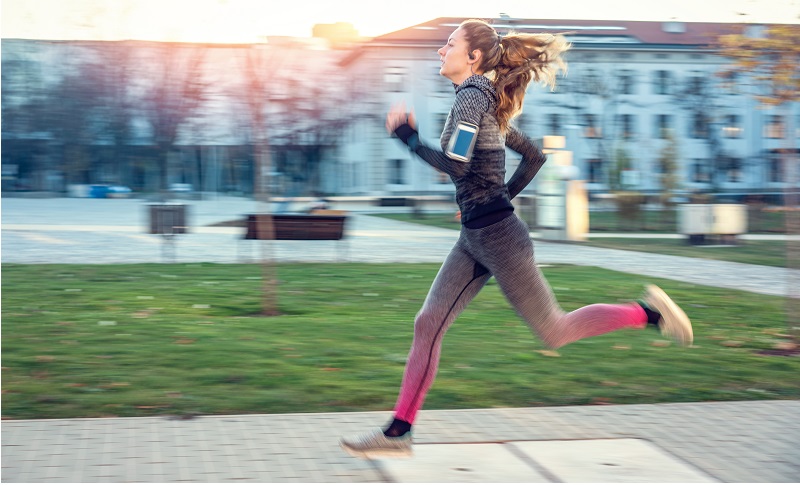
There are many parts and pieces of a running shoe that make each one stand out as unique. All these features are designed to work seamlessly so you enjoy benefits such as a lightweight shoe, great grip, cushion, or support.
Of course, most shoes provide more than one benefit. Below, you will find a list of the most common features of women’s running shoes. Which features are most important to you?
Outsole Material
While some sneakers and other shoes that may need a great grip but not necessarily lightweight, a natural rubber outsole is common. Perhaps even a rubber blend to provide the wearer with the qualities of several compounds.
However, it’s different with road running shoes. The outsole can be one of the heaviest components of the shoe and weight is your enemy as a runner.
Many running shoe outsoles are designed of EVA, or ethylene-vinyl acetate. EVA is a much lighter material than natural rubber. Another outsole material commonly used is TPR, or thermoplastic rubber.
Upper Materials
The upper, or the part that wraps around the top of your foot, can be made of many different materials and every brand, and even each model from that brand, will be different. Perhaps it will be a different material or a combination of different ones, but each upper is different.
Underpronators may want a more flexible upper so the top of their foot isn’t forced flatter than is natural for them. Underpronators may need the support that a firm upper can provide. The upper of a road running shoe is much more than the looks it provides so it should be considered carefully.
Toe Box
As your foot transitions from heel to toe and more weight is placed on the forefoot, the ball of your foot and your toes naturally spread outward. This spreading helps to dissipate the amount of pressure on the forefoot over a wider area and gives you a wider area from which to “toe-off.” A fine example of this is the stance that track runners put themselves in at the starting line. They are on the balls of their feet for a reason.
The toe box of any road running shoe should allow your forefoot and toes to naturally spread. If the forefoot of the shoe is too narrow, the shoes may be uncomfortable. If it is too wide, it may allow your foot to move too much in the shoe and cause blisters or may even cause you to trip and fall. When it comes to the right sized shoe, be sure the toe box is comfortable but not too big.
Cushioning
Cushion is something that often gets sacrificed in a women’s road running shoe in favor of a more lightweight shoe. For some, this may not be a problem. For many seasoned road runners, having excess cushion in their running shoes might even feel strange.
If you aren’t yet used to running long-distance, however, then cushion is more important. The cushion can help your feet and ankles, as well as the lower body, adjust to the physical demands of the sport.
Pronation
Pronation refers to how much your foot rolls to the inside each time you take a step, whether you are walking, jogging, or running. Having a neutral gait is rare as most people either under- or overpronate.
Underpronation means that you don’t pronate enough or roll to the inside. Having high arches is the usual cause of this. You will need to have arch support to keep tension off the arches of your feet for a more comfortable run and fewer chances for injury or long-term damage.
Overpronation means that you pronate too much. If you have a low arch or flat feet, then your feet are rolling to the inside too much with each step. The most important feature you will need to look for in a new running shoe is stability. When your feet move too much to the inside, having the stability to keep them in a more natural position when running can make your runs much more comfortable.
Weight
You’ve seen that we added the weight, per shoe, to our feature highlights for each type of running shoes we’ve reviewed. This is important because of the lighter the shoe, the more time you can save on your runs.
However, if you cut too much weight by sacrificing cushion or stability, you may be uncomfortable during your run and your new shoes can have the opposite effect. The perfect shoes will blend all the features you are looking for into one pair. They are out there, trust us! And they are probably already on this list.
Grip
Grip is a feature that is more important for some runners than others. It depends on the type of road running you expect to do. If you only run during good weather conditions, or if you live in an area that rarely sees wet weather, then nearly all running shoes would work well for you.
However, if inclement weather doesn’t stop you from getting out of the house for your regularly scheduled runs, you will need to find a road running shoe with maximum grip. Grip is important in wet weather because, without it, you can slip and trip, possibly causing injury.
To be safe, you’d have to slow your run to maintain grip. With the right road running shoes, you can push yourself harder and farther no matter the weather.
Flexibility
The human foot is naturally very flexible, but it is only flexible in certain directions. The best road running shoes for women will be designed specifically for the way a woman’s foot flexes while running. It should also prevent her foot from flexing in ways it’s not meant to. All of the road running shoe reviews above feature shoes that are designed specifically for women runners and their feet.
FAQs About Road Running Shoes for Women
Even if this is your 10th pair of running shoes, you’re bound to have questions about finding the best pair, how to take care of them, and when to replace them. We get many questions from novice and expert runners alike and these are the top FAQs we get most often.
Q: What are the best women’s running shoes for long-distance?
A: The two features that long-distance runners should look for in running shoes are a wider toe box and a flexible or stretchy upper. The reason these features are important is that after many miles of running, your feet will most likely start to swell. A shoe that can’t expand on its own can get quite uncomfortable after a while.
Experienced runners may find that the lightest weight shoe is better for them. While a comfortable toe box and upper are still important, those who have been running for a while might take a lighter shoe over one that features more cushion. If you are just starting out, you’ll want to try a running shoe for long-distance that provides at least some type of cushion.
Q: How do I choose a good running shoe?
A: You can follow our Buyer’s Guide above! But, some other things should be considered as well. The first is your shoe size. Not all shoe brands size their shoes the same way. If you wear a size 8 in one brand, for example, you might wear an 8 ½ in another. It’s important to look at sizing charts for each brand to make sure the shoes you buy are the right size.
Sizing also matters if you will be using an orthotic insert and insole. Some orthotics are direct replacements for the insole of the running shoe so you should find a shoe with a removable insole. If your orthotic is an addition to the shoe’s insole. These take up space within the shoe so you may have to size up by one-half or even as much a whole size.
Q: How often should running shoes be replaced?
A: While each brand has its own recommended “mileage” on their shoes, the average is 300 to 500 miles. You should write down the date you started using the shoes and keep track of all the miles you put on them by tracking every run. It helps to keep your running shoes for running only and not use them for daily wear.
Replacing your running shoes between 300 and 500 miles is only a recommendation and isn’t a hard and fast rule. If you find that your shoes are becoming uncomfortable, the tread is wearing thin, or other signs of wear, then you should replace them sooner. However, you should never go past 500 miles.
To help you track not only the mileage on your running shoes but also your running achievements, give this free running mileage printable a try.
Q: How can I make my running shoes last longer?
A: There are several things you can do to make your running shoes last longer. While breaking some of these “rules” can’t be avoided at times, being as diligent as possible about them can help you get the most out of your running shoe investment.
- You should only use your running shoes for running. Have separate shoes for daily wear.
- Don’t put your running shoes in the dryer. If they get wet during a rainy run or from a particularly long and sweaty one, you can draw out the moisture by placing dry paper towels or newspaper in them.
- Have two pairs for each running season and switch between them. Each pair will last longer so you don’t have to switch to a new pair halfway through the season and spend time adjusting to them.
- Running in them during extreme weather conditions is one thing but leaving them sitting out in the cold or in the heat is another. Store them properly inside your home, preferably in the shoebox they came in or in a plastic shoebox. Try keeping your printable mileage tracker inside the box for each pair!
- Improve your running form to keep from wearing out the tread in one specific area instead of evenly and to keep from breaking down the support of the outsole and midsole of the shoe. Proper running technique can also prevent acute and chronic injury.
Q: How do you know when running shoes are worn out?
A: There are several ways you can tell when running shoes are worn out. While any one of these can signal it’s time to start shopping for another pair, two or more means it’s time to find a new pair ASAP. Running in shoes that are worn out can cause unnatural movement of your foot and ankle that can cause long-term injury or can cause slips and falls resulting in acute injuries.
- Age: If you run only twice each week, the average age is one year. If you run as much as 6 to 7 days each week, the maximum age of your shoes is just 4 months.
- Mileage: Like we mentioned above, your road running shoes should last between 300 and 500 miles. You can replace them sooner, but they should never have more than 500 miles on them.
- Midsole Compression: If you look at the inside edge of the soles of each shoe and you see wrinkling, it’s time to replace your shoes. These wrinkles indicate that the midsole is compressed and no longer providing support.
- Worn or Uneven Tread: If the tread of your shoes is worn, especially if severely worn, it’s time to start looking for a replacement. If the tread is unevenly worn, you should replace them, but you can also use the uneven wear patterns to help you choose running shoes with the proper pronation.
- Pain: If your shoes have never caused you pain before but they do now, then it’s definitely time to replace them. New shoes may alleviate that pain, making your running more enjoyable.
Tips for Choosing Women’s Road Running Shoes
Ready to choose your new women’s road running shoes? Hold on, there! We have a few more tips to help you get the most out of your investment.
Tip #1: Always Wear the Right Sized Shoe
Wearing a running shoe that is too big can be just as painful as wearing one that is too small, and either can cause injury. A small shoe can cause stress fractures and a big shoe can cause blisters. These are best-case scenarios. Sizing charts can help you find the perfect size shoe based on the brand and model you choose. Many have also switched from one brand to another and can compare how the two brand’s sizing compare.
Tip #2: Consider Construction Before Looks
While most shoes are designed to look as good as or better than they perform, the looks aren’t as important as other factors. Before choosing a style, be sure to compare the sizing, the pronation support, the weight, and other features. All of the top women’s road running shoes we’ve reviewed have multiple colors and styles available so once you choose the right shoe, then you can choose the right look!
Tip #3: Invest in Quality and Comfort
If your goal is to run long-distance or to run often, then you want to wear high-quality running shoes. While there are many cheaper options available, when you invest in a well-known brand that other runners already trust, you know your shoes will last and they will be comfortable. Investing in better quality may also save time and money.
For example, a less well-known brand may not utilize the same technology that keeps your feet, ankles and lower body aligned. Without this, you could suffer an injury which means downtime away from running.
And skimping on your running shoes may mean they won’t last very long with your intense running schedule. You may have to buy shoes more often when investing in a great pair at the beginning means you won’t have to buy road running shoes as often.
Tip #4: Look at the Soles of Your Old Shoes
Looking at the soles of your old running shoes can tell you quite a bit. Not only do you know when you need to replace your shoes but you can also see whether you are a neutral pronator or if you have high or low arches.
If the tread of your shoes is worn mostly on the outer edge, then you are an under pronator and need shoes for those with high arches. Many runners with high arches find that neutral shoes with a flexible upper work very well, such as the Brooks Glycerin 17 or the New Balance 680v6 Cushioning road running shoes for women.
Overpronators are just the opposite and have low arches. Many of the road running shoe reviews above feature shoes that are ideal for those with low arches or flat feet. Overpronators need a much different type of running shoe with much more stability.
Tip #5: Keep Track of Your Shoe’s “Mileage”
We’ve mentioned it before but it’s worth discussing again. Knowing how many miles you’ve put on your shoes can help you know just when you need to replace your shoes. Also, knowing just how many miles you’ve run can motivate you to keep going! Set some goals and run, run, run!
Road Running Shoes for You: An Informed Choice
The right running shoes can make all the difference in your experience and achievements. Which of our top 7 picks was your favorite? Do you have questions about buying the best road running shoes for women? We’d like to hear them! Do you have tips for new runners or those who are looking for new running shoes? Let us know! We’d love to hear from you in the comments.
How We Researched
To come up with the top road running shoes, we researched a variety of sources for reviews such as REI, Walmart, Target and Dick’s Sporting Goods along with our own personal experience.
The authors consulted sources such as online magazines for research and reviews unbiased information.
By using Fakespot.com we tried to eliminate fake reviews and use only genuine ones.
With so many options available, the authors narrowed down the selections by using products they felt were the best value for the money.
The staff authors have a wide and varied background as fitness trainers, yoga instructors and runners. The authors have decades of experience and are eager to share their knowledge with readers.
In order to narrow down the options, we used personal experiences plus recommendations from other trainers and instructors.

